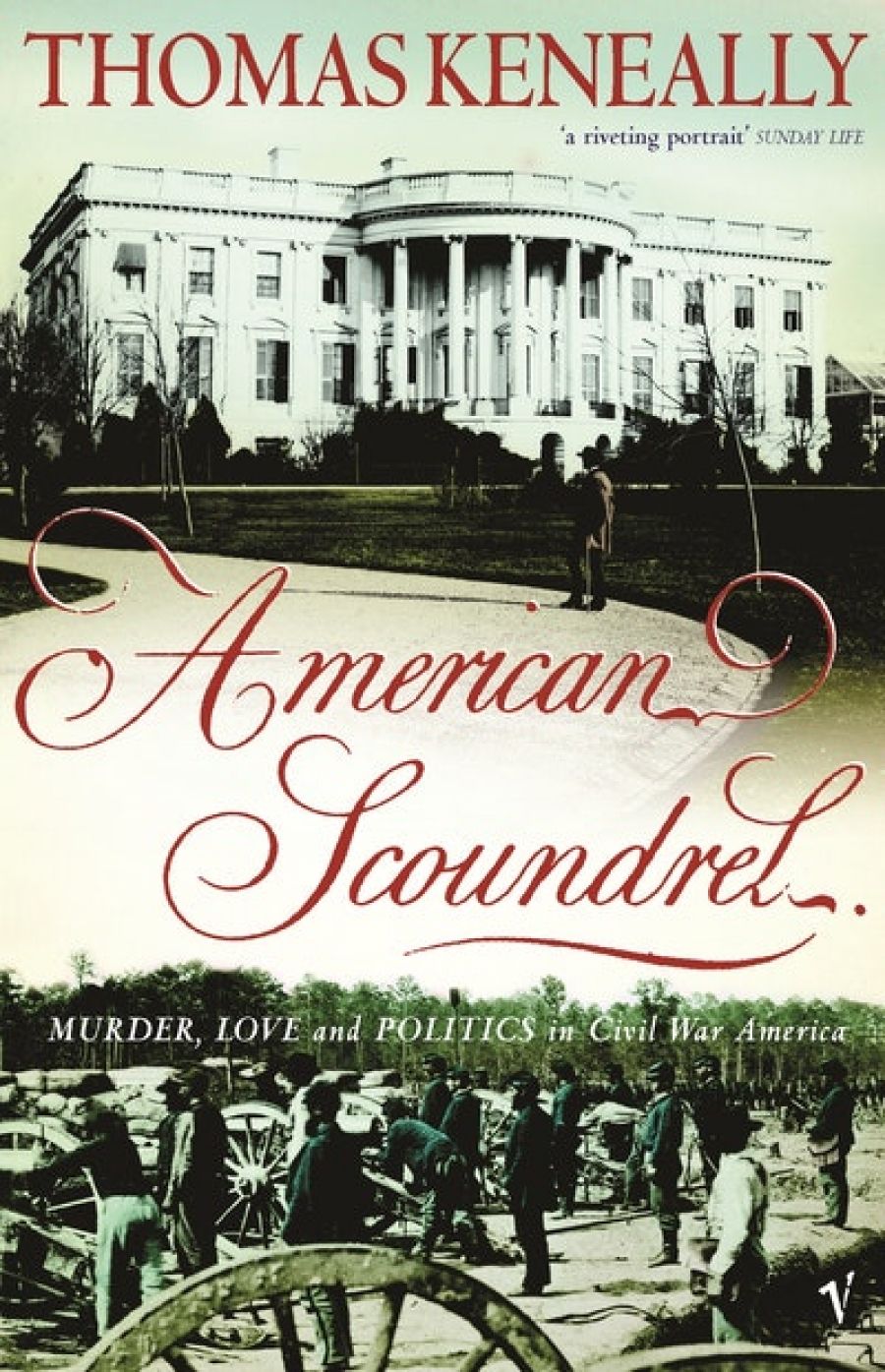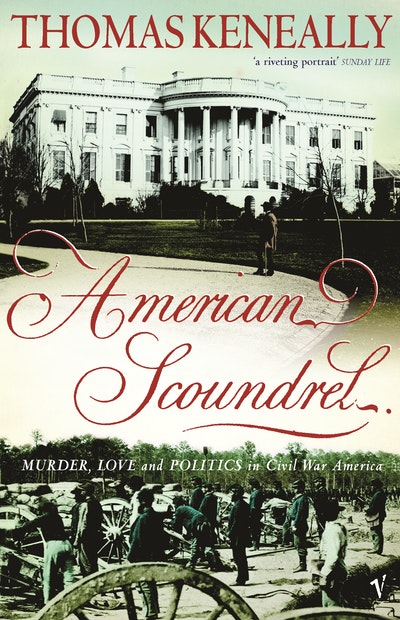
- Free Article: No
- Contents Category: History
- Review Article: Yes
- Article Title: The General's Right Leg
- Online Only: No
- Custom Highlight Text:
‘Ah, Dan Sickles. I visited his leg,’ announced a colonel recently, as he spotted American Scoundrel on the floor of my office. He was referring to Sickles’s right leg, which was shattered by an unexploded cannonball on 2 July 1863, at Gettysburg. Sickles, as major general of the Third Corps of the Union army, had just led his men to what would prove an endlessly controversial victory, given that he had defied the orders of his commanding officer, George Gordon Meade, as to the positioning of his troops. As Thomas Keneally reports:
After chloroform was administered to Dan, Dr Thomas Sim, the corps’ medical director, using a new method of rounded amputation, cut off the leg at a third of the way up the thigh. He had just read that the Army Medical Museum in Washington was advertising for samples, and so, instead of throwing the limb into a heap, he had it wrapped in a wet blanket and placed in a small coffin for shipment to Washington. Dan’s shattered leg lived on as a museum exhibit and remains on display at the Walter Reed Hospital in Washington.
- Book 1 Title: American Scoundrel
- Book 1 Subtitle: Murder, Love and Politics in Civil War America
- Book 1 Biblio: Random House, $39.95 pb, 392 pp
- Book 1 Cover Small (400 x 600):

- Book 1 Cover (800 x 1200):

According to the colonel, Sickles used regularly to visit the leg, too, on the anniversary of his parting from it. Although this detail is not mentioned either by Keneally or in an earlier biography (Edgcumb Pinchon’s, published in 1945), one wants it to be true, because it manifests so piquantly the incongruous characteristics that comprised Sickles’s personality. By all accounts, Keneally’s protagonist belongs to the genus ‘colourful rogue’, by turns sentimental and callous, courageous and contemptible. Sickles’s alleged pilgrimages to his lost limb are not simply emblematic of the man himself, but also perhaps – to stretch a point – of the art of biography itself. Any biographer who genuinely attempts to know their subject will encounter relics that are bound to cause dismay, evidence both poignant and grotesque.
Anyone who has heard of Dan Sickles in passing will know at least two things: that he lost his leg in the Civil War, and that he shot his wife’s lover in front of witnesses and got away with it. These defining moments necessarily feature prominently in any account of his life. Much has been written about this notorious figure, and the question arises as to why Keneally has felt it necessary to add another volume. To some extent, he has answered this in the Preface. Whilst engaged in earlier research on the life of Thomas Francis Meagher, an Irish political prisoner transported to Australia, Keneally became interested in Meagher’s later association with Sickles in the USA. American Scoundrel is thus anticipated in a succinct summary, at the centre of Keneally’s The Great Shame (1997), of Sickles’s killing of Philip Barton Key in February 1859, and of the ensuing trial. Sickles’s formidable team of lawyers made legal history, employing the defence of ‘temporary insanity’ for the first time in the USA.
Keneally’s originality mainly lies in his detailed attention to the hitherto neglected subject of Sickles’s first wife, Teresa Bagioli. Keneally has evidently been greatly moved by the short blighted life of Teresa, to the extent that his language sometimes reflects a degree of self-irony about his partiality. She is, for example, ‘spectacular Teresa’ and ‘shining Teresa’ in London, when Dan is secretary to the US legation in the early 1850s; ‘fragrant Teresa’ in Washington, when Dan is elected as a Democrat in the House of Representatives in 1857; and ‘exquisite Teresa’ in the moment of her disgrace.
Teresa was the granddaughter of an Italian immigrant, Lorenzo Da Ponte, who was professor of philosophy and belles lettres at New York University. As a seventeen-year-old student, Dan Sickles was sent to board in Da Ponte’s household, which included his adopted daughter, Maria, her husband Antonio Baglioli, and their three-year-old daughter. Teresa developed into a prodigious and vivacious child, fluent in several languages. Sickles and Teresa married when she was sixteen. A year later, she gave birth to their daughter, Laura. Although Sickles apparently venerated Teresa, he was also constitutionally incapable of monogamy, and frequently left his adolescent wife to her own devices whilst he was elsewhere occupied at work or at play. In 1857 Teresa became romantically involved with Philip Barton Key, a widowed attorney much in demand in their social circle. Their recklessness, Key’s in particular, made discovery of the affair inevitable. The morning after Sickles had forced his wife to write a full confession, Key’s frantic hovering outside their home provoked Sickles into pursuing him to Madison Place and fatally shooting him.
Aspects of Sickles’s acquittal appear dubious from a 21st-century perspective. The President, James Buchanan, himself long suspected by many of being infatuated with Teresa, did not behave with propriety. He compelled a White House page, who was an eyewitness, to flee, thus preventing that witness’s testimony from being heard. Nor was the matter of Sickles’s own habitual adultery ever raised at trial; the sexual double standards with which the case was imbued were not, at that time, an issue. In the aftermath, however, Sickles, possessed of that punctilious chivalry that is characteristic of some rampant libertines, made an unexpected choice, at considerable cost to his own political and social status. Widely expected to divorce Teresa, he formally reconciled with her, apparently mainly to protect her from society’s retribution, and instead aroused its wrath against himself. However, Teresa would see little of Dan during the eight years remaining to her, which are portrayed by Keneally as a kind of death-in-life. She was permanently banished to the family’s rural estate in Bloomingdale, and never again publicly acknowledged as Sickles’s spouse. Whilst her husband’s political fortunes were being restored through the opportunities offered by the Civil War, Teresa became ‘an un-noted non-presence. She had achieved a special level of invisibility.’ She was to die of tuberculosis at the age of thirty-one. Laura was later to suffer an equally tragic end, dying penniless in her thirties of the effects of alcoholism, long repudiated by her father for reasons that Keneally has been unable to fathom.
From 1865 to 1867, Sickles served as military governor of North and South Carolina. From 1869 to 1873, he was the US minister to Spain. During this time, he embarked upon an affair with the exiled Queen Isabella. Pinchon, Sickles’s earlier biographer, depicts Sickles’s second marriage, to Caroline de Creagh, in 1871, as having been cynically arranged by Isabella, to save her own reputation. Keneally is not so harsh, representing the affair with the queen more as an interlude during Sickles’s courtship of Caroline. Both authors are in accord in representing the marriage as disastrous. In 1879 Sickles left Caroline and their two small children and returned to the USA. He was not to see his second daughter for seventeen years, and it would be twenty-eight before he saw his wife and son again.
Throughout his life, Sickles, though politically canny, was chaotic with money. In his nineties, he was threatened with arrest for the disappearance of funds from the New York State Monuments Commission, of which he was chief. With extraordinary magnanimity, Caroline bailed him out. It is to be hoped that sufficient material remains in existence to enable someone eventually to write her biography with the thoroughness and sympathy that Keneally has brought to bear upon the life of Teresa.
Notwithstanding all his travels and adventures, Sickles’s story is largely a chapter in the history of New York City, site of his birth and of his death ninety-five years later. He is remembered for his civic service, not least for his efforts in the 1850s, when he was corporation counsel for the city, to acquire in 1853 the land that would be developed as Central Park. In trying to capture the complexity and vitality of Dan Sickles’s nature, Pinchon resorted to eclectic comparison – with ‘a Goethe, a Liszt, a Guy de Maupassant, an Aaron Burr, a Pancho Villa’. Keneally’s gentle final words on Sickles are probably as felicitous and appropriate an epitaph as any: ‘For the sake of his courage, the Republic honoured his vivid character and forgave him the failures of his heart.’


Comments powered by CComment